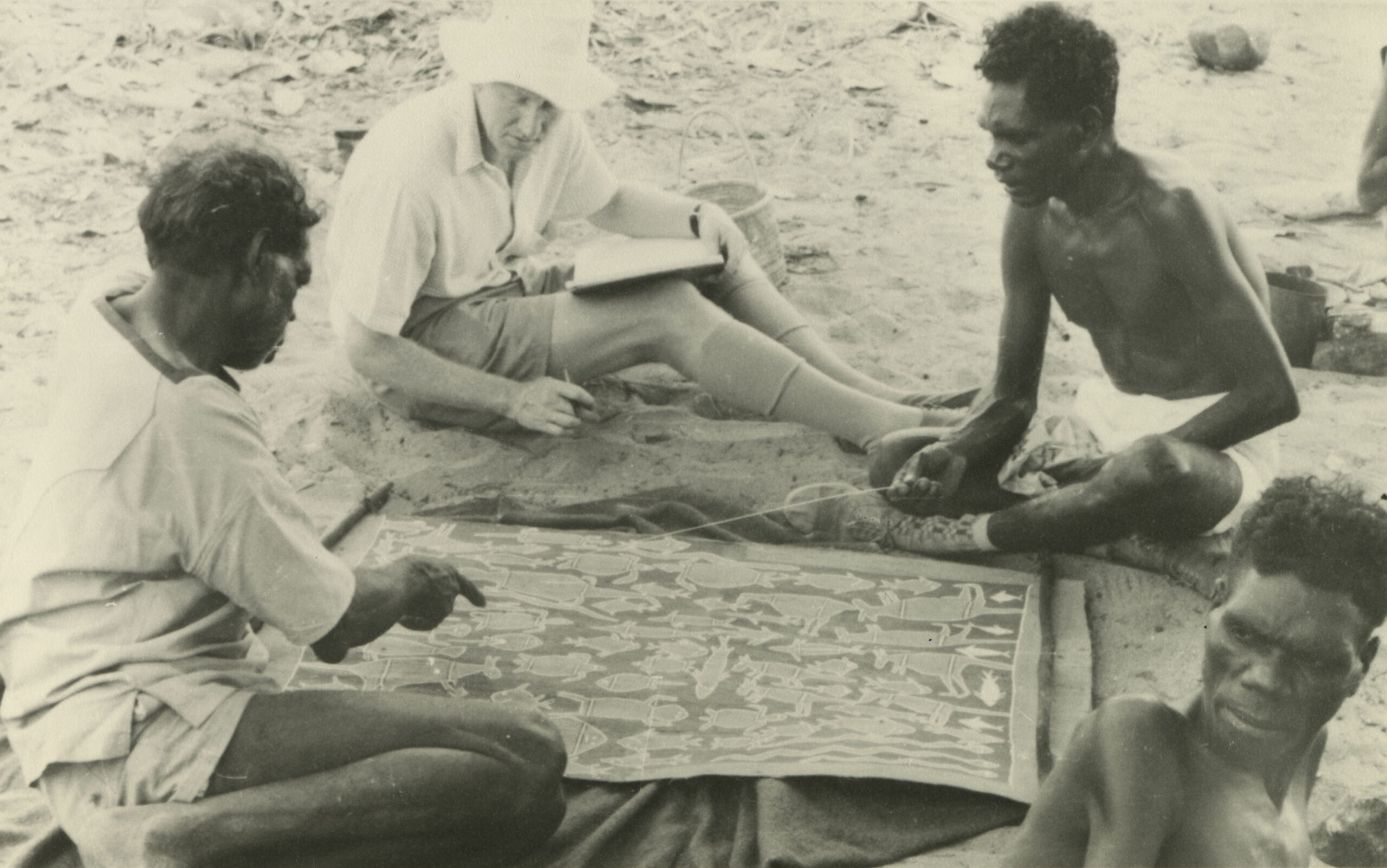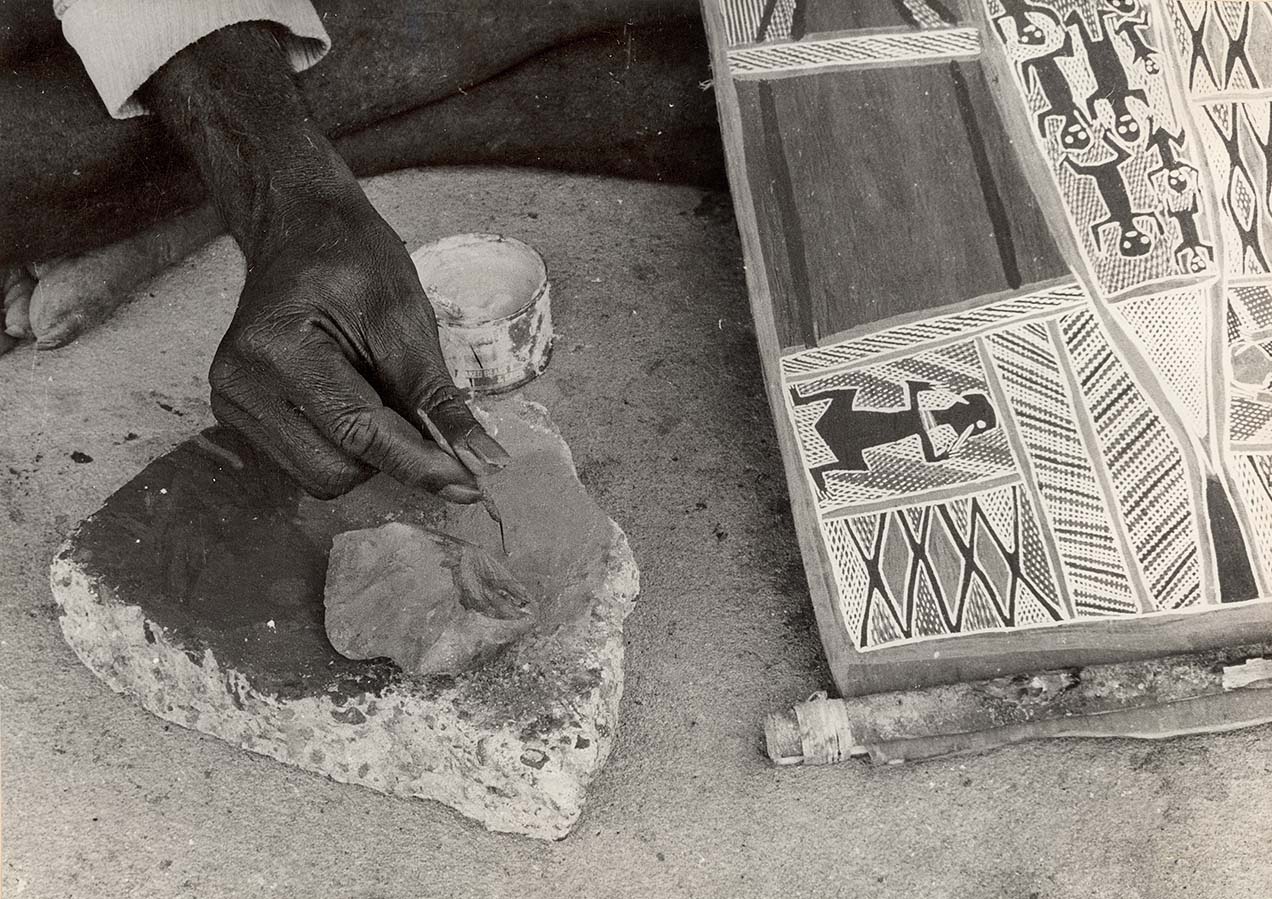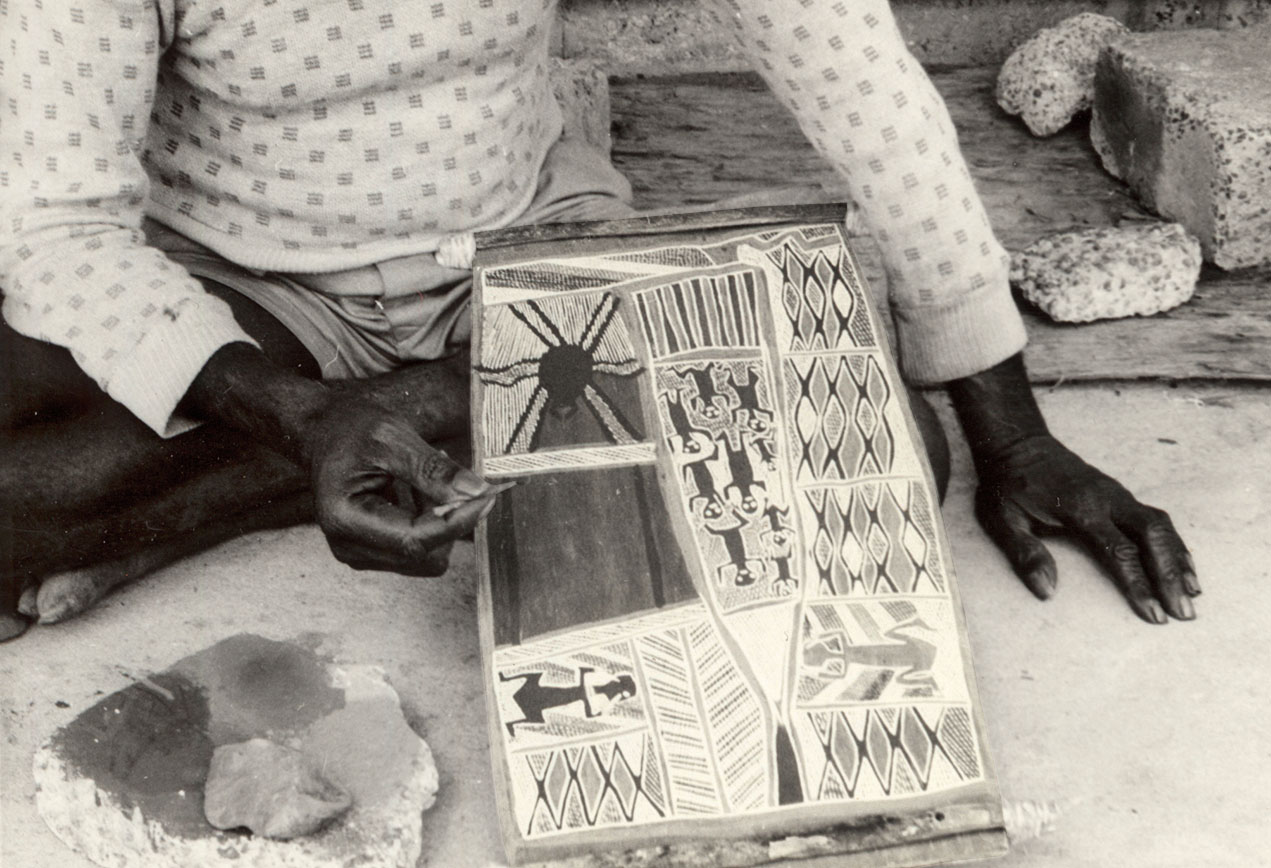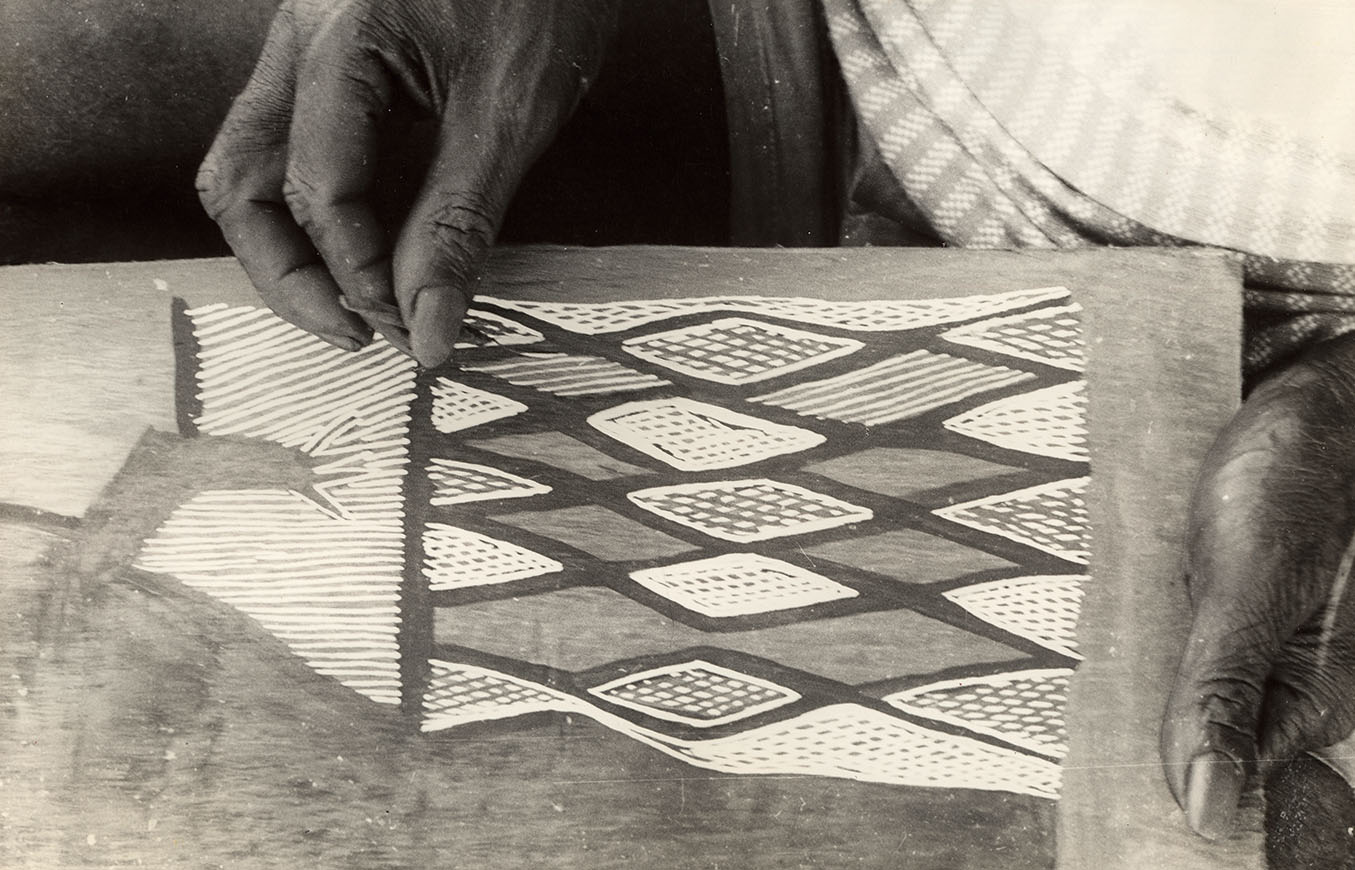
"The fire traveled to Ŋalarrwuy, where a sacred Ŋärra ceremony was taking place. You can see them all here, all the ancestral beings at Ŋalarrwuy: Garrtjambal (Red Kangaroo ancestor, Osphranter rufus), Biḏiwiḏi (Peewee ancestor) and Waṉ’kurra (Bandicoot ancestor, Isoodon macrourus macrourus) hid in a ḻarrakitj (hollow log) to escape the fire. Waṉ’kurra is danced and sung at funeral ceremonies and the men’s ceremony, as he is associated with the burial log used to contain the bones of the deceased. After the fire had passed, Gärr’ (Spider ancestor) came out and spun its web."
– YÄLPI YUNUPIŊU
More Info
In ancestral times, the leaders of Yirritja moiety clans used fire for the first time during a ceremony at Ŋalarrwuy in Gumatj country. This came about as fire brought to the Maḏarrpa clan country by Bäru the ancestral crocodile, spread north and swept through the ceremonial ground. From this ceremonial ground the fire spread further to other sites. Various ancestral animals were affected and reacted in different ways. These animals became sacred totems of the Gumatj people and the areas associated with these events became important sites.
The fire spread inland from the ceremonial ground and burnt the nest of Waṉkurra (Bandicoot) forcing him to hide in a hollow
log ḻarrakitj to save himself. Waṉkurra is thus danced and sung at mortuary ceremony as he is associated with the burial log used to contain the bones of the deceased.
Djirikitj, the quail (sometimes called the’ fire making bird’), picked up a burning twig from this fire and flew away with it, dropping it at Maṯamaṯa. There is a large paperbark swamp at Maṯamaṯa, where native honey bees live. Fire from the burning twig dropped by Djirikitj took hold of the tall grass in the swamp area and the native bees fled to Djiliwirri in Gupapuyŋu clan country. Thus Gupapuyŋu honey and Gumatj fire are linked through these ancestral events and also refer to a relationship between these two clans which is played out in ceremony.
The honey eating Pee-Wee Biṯiwiṯi built its nest high up in the trees safe from the fire- its song was to be heard after the morning of the fire. The indestructible spider Garr came out after the fire had passed and spun its web between the trees which is said to catch the souls of the Yirritja dead. Garrtjambal the kangaroo was as frightened as Waṉkurra and ran away from the fire burning his feet in the hot ash as he did so. Waṉkurra traveled through the hollow log with its tail on fire transferring the Gumatj identity to new places.
The harbinger of death is Ŋerrk, sulphur crested white cockatoo who is intimately associated with this place, these people and this ceremony. Another powerful Gumatj bird is Djilawurr whose sites are often associated with freshwater rainforest adjacent to the harbours of Macassans.
The Gumatj clan design associated with these events, a diamond design, represents fire; the red flames, the white smoke and ash, the black charcoal and the yellow dust. Also the black skin, yellow fat, white bone and red blood of Gumatj people. Clans owning connected parts of this sequence of ancestral events share variations of this diamond design.
– Buku-Larrŋgay Mulka Centre
Additional Information
Decade
1961
Medium
Natural pigments on eucalyptus bark
Dimensions (IN)
32 1/2 x 17 3/4
Dimensions (CM)
82.5 x 45
Credit
Kluge-Ruhe Aboriginal Art Collection of the University of Virginia. Edward L. Ruhe Collection. Gift of John W. Kluge, 1997. 1993.0004.091
Narrative
Gumatj
The Gumatj are a large clan, with homeland communities at Gunyuŋarra, Birany’birany, Dhanaya, Bawaka, Maṯamaṯa...
Songline
Bäru | The Saltwater Crocodile
During the Waŋgarr (ancestral times), there was a woman named Dhamiḻiŋu. She lived with her...
Location
1960s
The 1960s were a decade of tumult and triumph for Yolŋu art and artists. In...
About The Artist(s)
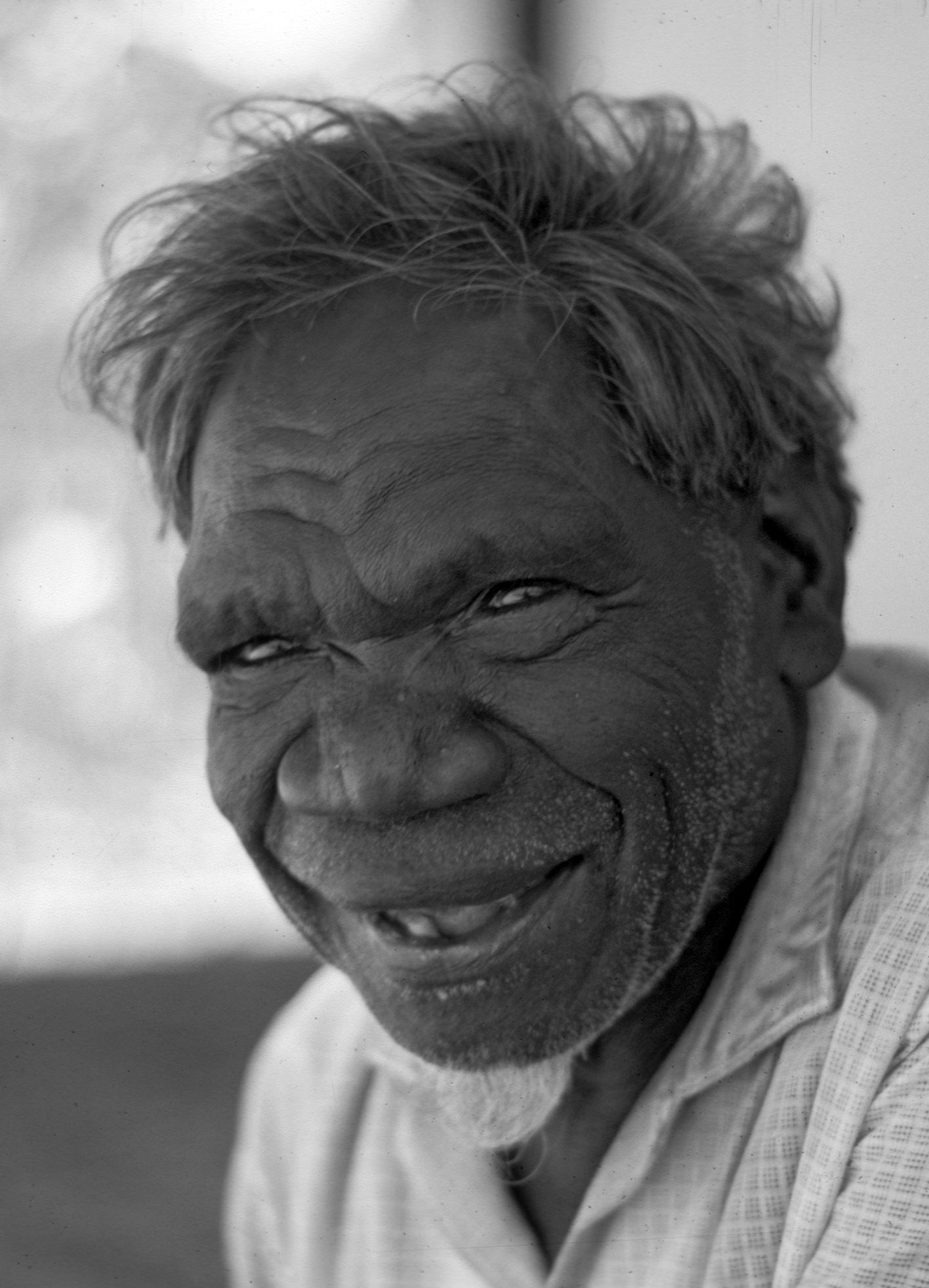
Clan
Gumatj
Artist Dates
c.1907-1979
Alternative Names
Mangarawui, Mungurawi, Mungarawoi, Munggaraui, Mangarawoi, Munggurrawuy, Munggeraui
Mungurrawuy Yunupiŋu
Mungurrawuy Yunupiŋu was an important patriarch of the Gumatj clan. He contributed to the Yirrkala Church Panels and was a signatory to the Yirrkala Bark Petitions. His children include the Aboriginal leader and land rights activist Galarrwuy Yunupiŋu; Mandawuy Yunupiŋu, the lead-singer of the band Yothu Yindi; and the acclaimed artists Barrupu, Gulumbu, and Nyapanyapa Yunupiŋu.


